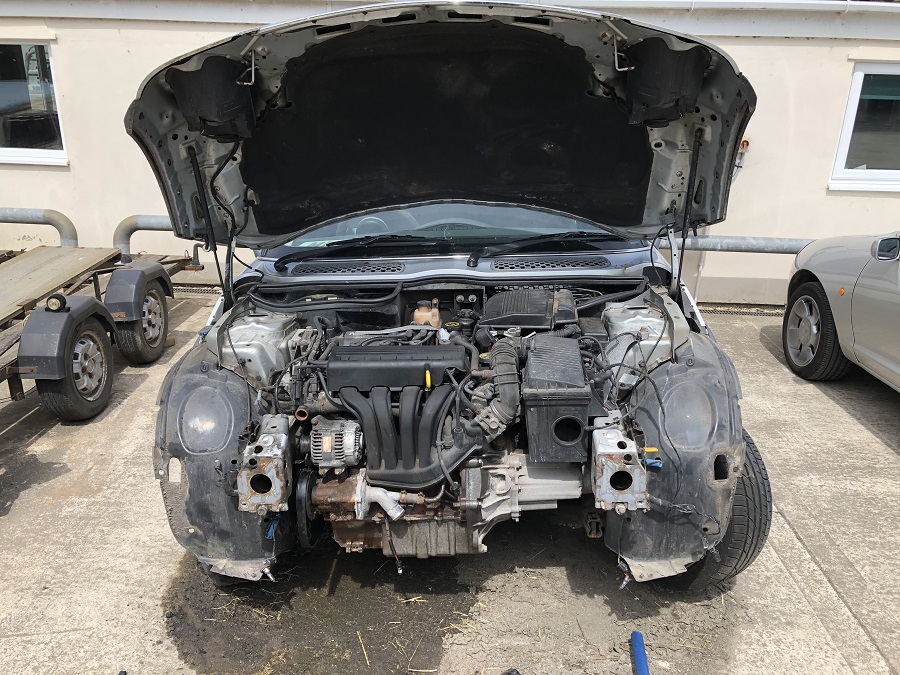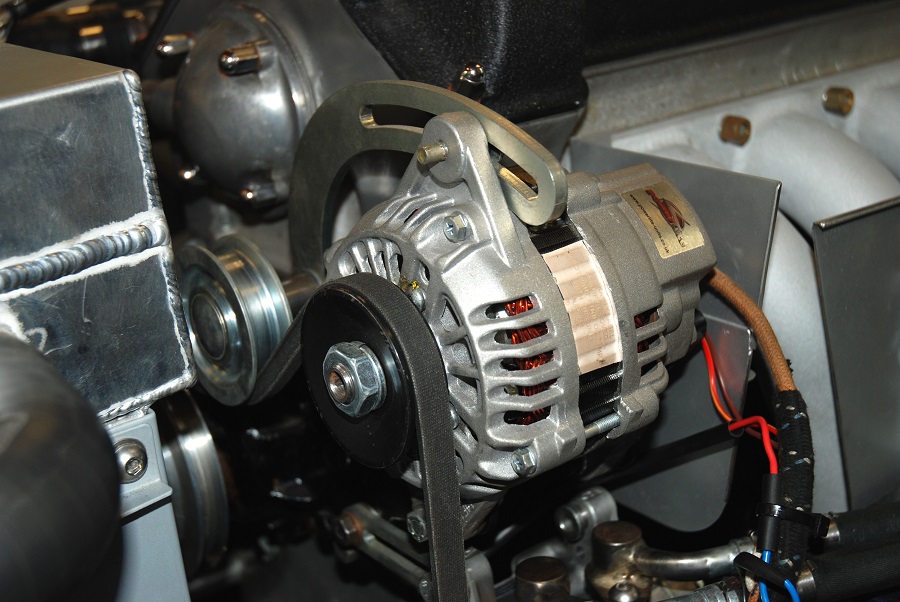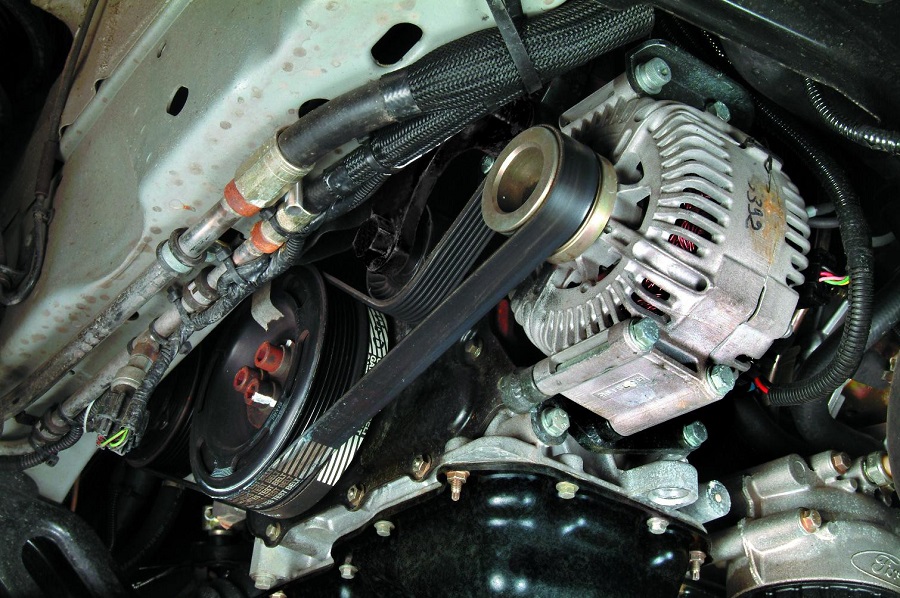Keep your car running smoothly with our complete alternator belt guide. Learn about this crucial component and how to maintain it properly.
The alternator belt on your car may not be at the top of your upgrade list, but ensuring its health is one of the most important parts of car maintenance. It is responsible for powering all the electrical systems in your car, from the headlights to the air conditioning, to recharging your battery. Without a working alternator, your car will not be able to function properly and if the belt breaks, it won’t be too long before you’re left stranded at the side of the road with a dead battery.
In this feature, we will cover everything that you need to know about alternator belts. Keep reading to learn more about this simple yet crucial part of your car’s electrical system!

What is an Alternator Belt?
The alternator belt is a vital part of the engine’s charging system that links the alternator to the crankshaft, producing electrical power. It must be replaced periodically due to wear and tear, and proper maintenance can prevent the inconvenience of avoidable breakdowns and expensive repairs.

This Mini’s alternator is located to the left of the intake manifold.
How to Inspect Your Alternator Belt
Proper inspection of your car’s alternator belt involves checking for visible wear and tear such as cracks or fraying. Testing the tensioner pulley’s tension – ideally by using a tension gauge, or simply by manually pushing on it – is essential.
You should also make sure to check for proper alignment with other components such as the power steering pump, air conditioning compressor, water pump, and so on. If you notice any signs of deterioration, replace your old belt with a new one to avoid unexpected breakdowns and costly repairs.
What Are The Signs of a Failing Alternator Belt
If you begin to hear strange noises coming from your car’s engine (like squealing or screeching), or if you’re having trouble starting your car, it may indicate that your alternator belt is on its way out. Replacing a failing belt as soon as possible is vital to prevent any potential risks of failure.
When to Replace Your Alternator Belt
Regularly inspecting your alternator belt is crucial for ensuring its longevity. It’s typically recommended to replace your alternator belt around every 50,000 miles – or as advised by the manufacturer, but on a tuned engine or one that runs at higher engine speeds for a prolonged period (think race car!), then more frequent replacements are advised.
If you notice any squealing or screeching noises coming from the engine, dimming headlights, or difficulty starting the engine, it may be time to replace your old belt or at least investigate further. Promptly addressing any issues can help avoid potential failures down the line. Remember that regular maintenance and replacement of belts, tensioner pulleys and/or idler pulleys can also extend the lifespan of other components on the same belt circuit, such as power steering pumps, air conditioning compressors, or in some cases, even the engine’s water pump – and failure will quickly destroy your entire engine!

Expert Tips for Replacing an Alternator Belt
When replacing an alternator belt, make sure to follow our five expert tips carefully.
- First, you need to identify the specific type of belt that your vehicle requires.
- Before removing the old belt, inspect it for any wear or damage.
- Once you’ve done that, loosen the belt tensioner and carefully take off the old belt.
- Next up is installing the new belt according to the manufacturer’s instructions while adjusting tension as necessary.
- Finally, check its performance by running your engine while keeping an ear out for any unusual noises or vibrations. Ideally, check the voltage at the battery to ensure the alternator is charging the system correctly too.
Top Alternator Belt Brands to Consider
When selecting an alternator belt, choosing a reputable brand known for its quality and durability is vital. OEM parts are available for modern models, but top-rated brands include Gates, Dayco, and Continental for aftermarket replacements.
Gates offers long-lasting belts designed to endure harsh conditions, whereas Dayco provides a variety of choices suitable for different engine types. On the other hand, Continental produces high-quality products that are built to withstand wear and tear.
Always make sure you select the correct size belt that fits your specific model perfectly, as attempting to fit an incorrect size belt will just end in frustration!
Common Alternator Belt Replacement Mistakes to Avoid
If you are looking to replace the alternator belt on your car, here are some common mistakes to avoid.
- Be sure to properly loosen the tensioner pulley and inspect for damaged or worn components before installing the new belt according to the manufacturer’s instructions.
- Select the correct size and type of belt for your specific vehicle model to ensure the proper function of accessories such as the power steering pump, water pump, air conditioning compressor, and timing belt.
- Regular maintenance and inspection of the grooves can prevent your old belt from suddenly snapping and potentially causing your car to stop running correctly.
- When replacing your alternator belt, it is strongly recommended to wear eye protection and use a socket wrench with a socket that is at least an inch long, because the tension on the system can be potentially hazardous.
Serpentine vs. V-Belt: Which One is Better for Your Car?
When it comes to serpentine vs. V-belts for your car, it’s not a clear-cut choice. While serpentine belts are more efficient and durable, V-belts are budget-friendly and easier to replace. Ultimately, it’s not a choice we can make and we simply need to replace the old one like-for-like. Therefore, the right belt for your car depends on the make and model, so consult your owner’s manual or ask a mechanic before ordering if you are unsure which replacement belt you need.

Avoid Breakdowns With Our Guide to Alternator Belts
So, there you have it – an alternator belt is not exactly a hero mod that will impress your mates at the next car meet in the same way a shiny new big turbocharger might, but it is a crucial component that drives many of your car’s electrical systems. And, without proper care and attention, your mates will certainly be unimpressed by a car that doesn’t run or can’t recharge its own battery!
It is essential to regularly inspect and maintain it to avoid any unexpected breakdowns on the road. Replacing an alternator belt can be complex, but it’s usually simple enough for any competent home mechanic to successfully replace. If you’re unsure or aren’t confident in your ability, it’s best to seek professional help or follow expert tips for a smooth replacement process.
To learn more about serpentine belts, V-belts, and timing belts, check out our comprehensive guide to engine belts. Enjoy!








